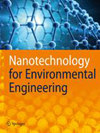
Nanotechnology for Environmental Engineering Q0
- 期刊收录:
- Scopus
- 期刊ISSN:
2365-6379
- 期刊简拼:
- 年发文章数:
0
- E-ISSN:
2365-6387
- Gold OA文章占比
0.00%
- 研究文章占比:
0.00%
- 是否OA:
No
- Jcr分区:
Q0
- 中科院分区:
- 出版商:
Springer Nature
- 涉及研究方向:
Environmental Science-Environmental Engineering
- 出版国家:
- 出版语言:
- 出版周期:
4 issues per year
- 出版年份:
- 2023-2024最新影响因子:0
- 自引率:N.A.
- 五年影响因子:0
- JCI期刊引文指标:0
- h-index:暂无h-index数据
- CiteScore:6.50
期刊简介
Nanotechnology for Environmental Engineering is an international peer reviewed interdisciplinary journal that focuses on publishing original research articles, critical reviews, short communications, policy papers, and mini-reviews in the following topics:
1. Application of nanotechnology for substantial benefits of environment.
2. Nano-engineering approach for improved environmental strategies for a better protection of human and environmental health.
3. Emerging strategic plans/ideas of bio-nanotechnology origin including green chemistry approach (e.g. green synthesis), molecular biology methods and chemical processes (fate determination of trace metals).
4. Biocompatibility/Cytocompatibility of nanostructured materials intended for environmental applications. Both in vitro and in vivo bioassays oriented credentials will be prioritized to scientific theoretical acceptance/validity.
5. Point of origin of environmental engineering in a mutual feedback manner to nanotechnological application for environmental problems.
6. Bio-nanotechnological elemental approach being set at transition stage (including pros and cons) with scope of environmental applications.
7. Renovated theme (engineering approach) with better skills for process engineering applications.
8. Quantitative and qualitative assessment of nanotechnological/environmental engineering methodology on practical scenario (i.e. mechanistic interpretation but not empirical evidence) basis.
9. Global phenomenon/acceptance of innovativeness of well explored ideas with a broader application in nanotechnology and environmental engineering.
10. Public Policy of environmental engineering with respect to safety and sustainability.
11. Biological/chemical/thermal conversion of agro-industrial waste into chemicals and fuels.
12. Engineering approach for biological/chemical treatment of environmental pollutant.
13. Engineering innovation in environmental monitoring of emerging contaminants.
14. Nanotechnology in pre-concentration of environmental samples.
15. Techno-economical aspects of environmental engineering and nanotechnology processes.
Continuous Article Publishing
Nanotechnology for Environmental Engineering publishes following the Continuous Article Publishing (CAP) mode. This means that each article is published online with an article citation number, shortly after receipt of authors proofs. This supports shortened publication time.
Key Information
- Nanotechnology for Environmental Engineering (NTEE) is indexed in Scopus (2020 Cite Score 4.1).
- The journal uses double-blind review.
- Papers are screening for originality and similarities before handling them by topical editors.
- The first round of peer review does not exceed 40–50 days.
- Mostly two/three or even four revisions are required before final acceptance.
- NTEE is committed to meeting and upholding standards of ethical behaviour at all stages of the publication process.
- The COPE code of conduct and Springer editorial policies are used as the basis for the NTEE publication process
Nanotechnology for Environmental Engineering (NTEE) is committed to upholding the integrity of the scientific record. As a member of the Committee on Publication Ethics (COPE) the journal will follow the COPE guidelines on how to deal with potential acts of misconduct. Authors should refrain from misrepresenting research results which could damage the trust in the journal and ultimately the entire scientific endeavor. Maintaining integrity of the research and its presentation can be achieved by following the rules of good scientific practice as detailed here:
https://www.springer.com/us/editorial-policies
《Nanotechnology for Environmental Engineering》期刊已被查看: 次
期刊简写:
此期刊未被最新的JCR期刊引证报告收录
期刊信息
- PubMed Central (PMC)链接
- http://www.ncbi.nlm.nih.gov/nlmcatalog?term=2365-6379%5BISSN%5D
- 通讯地址
- 中国科学院《国际期刊预警名单(试行)》名单
-
2024年02月发布的2024版:不在预警名单中
2023年01月发布的2023版:不在预警名单中
2021年12月发布的2021版:不在预警名单中
2020年12月发布的2020版:不在预警名单中
此期刊未被最新的JCR期刊引证报告收录
- 审稿速度
- 收录数据库
- 是否oa
- 研究方向
- Scopus
- No
- Environmental Science-Environmental Engineering
分区信息
- 大类学科
- 分区
- 小类学科
- Top期刊
- 综述期刊
- 此期刊未被最新的 JCR 收录
- 版本
- 按学科
- 分区
- 影响因子
- WOS期刊SCI分(2023-2024年最新版)
- Q0
- 0
IF值(影响因子)趋势图
年发文量趋势图
自引率趋势图
中科院分区
常见问题
-
sci四区价格多少算合理?
一篇sci4区是sci里最便宜的了 价格一般在3-4左右,如果有人告诉你几k就能发或者五位数出头,个人建议谨慎一点,不能因为贪小便宜吃大亏如果四区就能满足学
《Nanotechnology for Environmental Engineering》同类:期刊
-
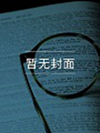
Journal of Inclusive Postsecondary Education
JCR:0区--分类:
影响因子0
收录DOAJ
-
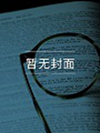
Stichproben
JCR:0区--分类:
影响因子0
收录DOAJ
-
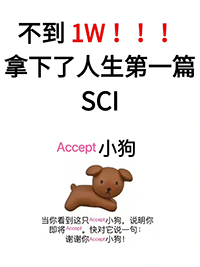
EManagement
JCR:0区--分类:
影响因子0
收录DOAJ
-
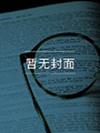
Metathesis Journal of English Language Literature and Teaching
JCR:0区--分类:
影响因子0
收录DOAJ
-
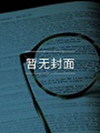
Clinical Psychology in Europe
JCR:0区--分类:
影响因子0
收录Scopus,DOAJ
-
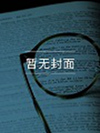
Ius Inkarri
JCR:0区--分类:
影响因子0
收录DOAJ
-
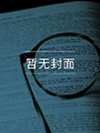
Medichna nauka Ukrayini
JCR:0区--分类:
影响因子0
收录DOAJ
-
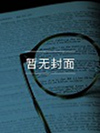
Economics Law
JCR:0区--分类:
影响因子0
收录DOAJ
